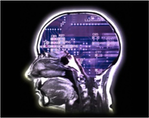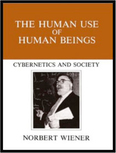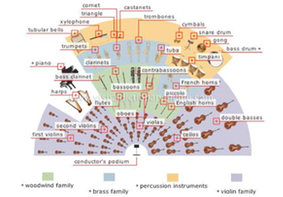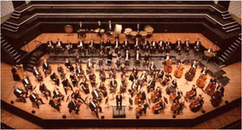
TO my mind, current technologies like the EHR are really just intermediate species in the evolution of healthcare IT. The current generation of clinical technology will be likely be replaced by complex interactive computing power that focuses less on individual encounters but reflects patterns embedded in the patients data stream.

With this in mind, the way we think about technology will also have to change: goal-directed collaborations between humans and their technologic instruments will require a completely new approach to interaction design -- on that focuses less on the data and more on the meaning and value of the data to the actors in the system: patients and professionals. Part of this change will mean a shift of attention from any single category of variables to the relationships between variables – including the human factors.
 When we hear about human factors in healthcare, it is often in the context of patient safety, as in "we need to protect patients from human factors". The success and safety record of the aerospace industry is often cited in this context. But while some tasks can and should be supported by technology, healthcare and healing can only be accomplished in a human context. From this perspective, analogies between healthcare and aerospace start to weaken. Yes, we can learn some things from aerospace in terms of anticipating and preventing problems on repeatable pathways, but managing humans to optimize their quality of life is not like assuring an airplane will not crash. Healthcare technology needs to be designed to support the human factors that create quality and optimize outcomes, such as the ability to make meaning, find context in complexity, and make genuine connections.
When we hear about human factors in healthcare, it is often in the context of patient safety, as in "we need to protect patients from human factors". The success and safety record of the aerospace industry is often cited in this context. But while some tasks can and should be supported by technology, healthcare and healing can only be accomplished in a human context. From this perspective, analogies between healthcare and aerospace start to weaken. Yes, we can learn some things from aerospace in terms of anticipating and preventing problems on repeatable pathways, but managing humans to optimize their quality of life is not like assuring an airplane will not crash. Healthcare technology needs to be designed to support the human factors that create quality and optimize outcomes, such as the ability to make meaning, find context in complexity, and make genuine connections.
And since we know right brain factors like tone and tenor are sometimes more powerful influencers than logic, we may need to reconsider how healthcare is organized and delivered. This is especially important as the roles and responsibilities across a patients 'health resource-community' are reengineered, and will require more collaboration and cooperation. Patient-centered care means more than everyone facing the patient and performing their roles; interactions between the players is as important as the performance of any one player.
With this in mind, we may want to look to a performance model that has proven its ability to support masterful players, individually and in concert: the symphony orchestra.

In which dozens of technical experts, each of whom has invested years mastering their specific instrument, come together, subsume their individual identities towards concordance and together are able to move people in ways that healthcare professionals can only dream about.
Extraordinary healthcare can be truly symphonic. In the symphony,
performers use their instruments to express their part of a score to
create a harmonious experience for the audience. In healthcare, the
score is represented by the evidence and best practices, but as the best musicians know, despite the score being the same, a symphony is never played the same way twice. Healthcare players can transcend the score by being mindful of the patient and of each other,
because the symphony only exists in the collective effort.

The bottom line: Just as musical instruments cannot play themselves, healthcare technologies should be instruments of human expression in service of health and healing, with a fundamental mission to provide the patient and their family a sense of harmony and tone even in the face of dischordance of their biology. Our human mission is comfort, safety and reliability, with professionals valued for their commitment to mastery and human service and patients helped to find the meaning in their quality calculus.